Seng W. Loke
Indoor PM2.5 forecasting and the association with outdoor air pollution: a modelling study based on sensor data in Australia
May 13, 2024



Abstract:Exposure to poor indoor air quality poses significant health risks, necessitating thorough assessment to mitigate associated dangers. This study aims to predict hourly indoor fine particulate matter (PM2.5) concentrations and investigate their correlation with outdoor PM2.5 levels across 24 distinct buildings in Australia. Indoor air quality data were gathered from 91 monitoring sensors in eight Australian cities spanning 2019 to 2022. Employing an innovative three-stage deep ensemble machine learning framework (DEML), comprising three base models (Support Vector Machine, Random Forest, and eXtreme Gradient Boosting) and two meta-models (Random Forest and Generalized Linear Model), hourly indoor PM2.5 concentrations were predicted. The model's accuracy was evaluated using a rolling windows approach, comparing its performance against three benchmark algorithms (SVM, RF, and XGBoost). Additionally, a correlation analysis assessed the relationship between indoor and outdoor PM2.5 concentrations. Results indicate that the DEML model consistently outperformed benchmark models, achieving an R2 ranging from 0.63 to 0.99 and RMSE from 0.01 to 0.663 mg/m3 for most sensors. Notably, outdoor PM2.5 concentrations significantly impacted indoor air quality, particularly evident during events like bushfires. This study underscores the importance of accurate indoor air quality prediction, crucial for developing location-specific early warning systems and informing effective interventions. By promoting protective behaviors, these efforts contribute to enhanced public health outcomes.
Predicting Next Useful Location With Context-Awareness: The State-Of-The-Art
Jan 16, 2024Abstract:Predicting the future location of mobile objects reinforces location-aware services with proactive intelligence and helps businesses and decision-makers with better planning and near real-time scheduling in different applications such as traffic congestion control, location-aware advertisements, and monitoring public health and well-being. The recent developments in the smartphone and location sensors technology and the prevalence of using location-based social networks alongside the improvements in artificial intelligence and machine learning techniques provide an excellent opportunity to exploit massive amounts of historical and real-time contextual information to recognise mobility patterns and achieve more accurate and intelligent predictions. This survey provides a comprehensive overview of the next useful location prediction problem with context-awareness. First, we explain the concepts of context and context-awareness and define the next location prediction problem. Then we analyse nearly thirty studies in this field concerning the prediction method, the challenges addressed, the datasets and metrics used for training and evaluating the model, and the types of context incorporated. Finally, we discuss the advantages and disadvantages of different approaches, focusing on the usefulness of the predicted location and identifying the open challenges and future work on this subject by introducing two potential use cases of next location prediction in the automotive industry.
Energy-Efficient UAV-Assisted IoT Data Collection via TSP-Based Solution Space Reduction
Jun 02, 2023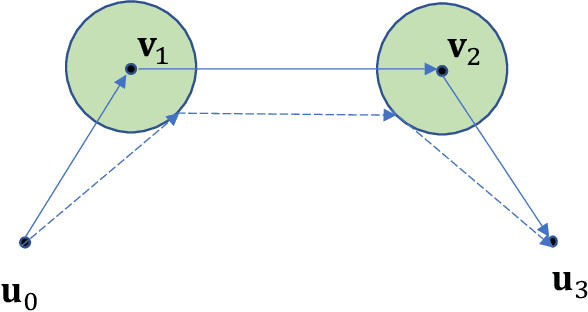
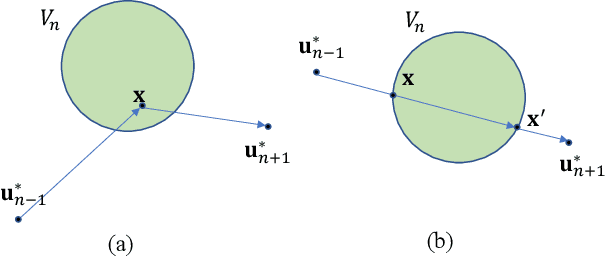
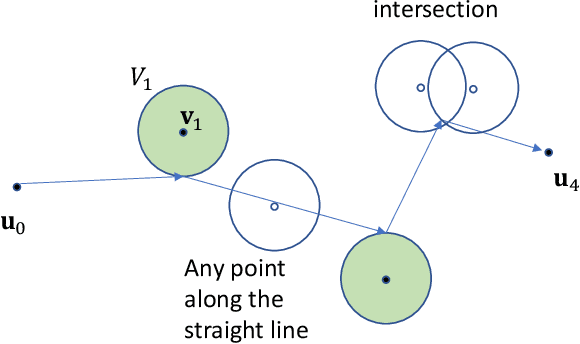
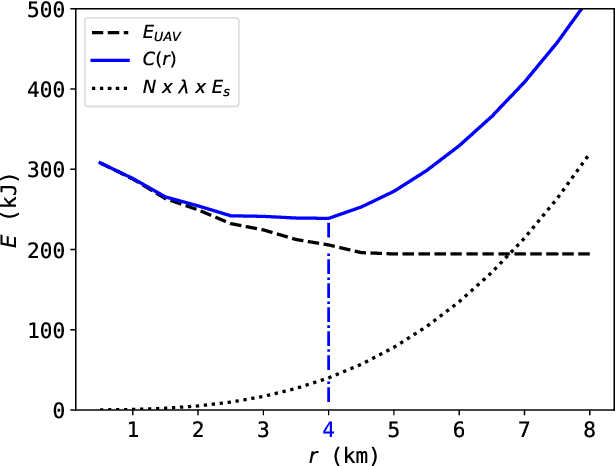
Abstract:This paper presents a wireless data collection framework that employs an unmanned aerial vehicle (UAV) to efficiently gather data from distributed IoT sensors deployed in a large area. Our approach takes into account the non-zero communication ranges of the sensors to optimize the flight path of the UAV, resulting in a variation of the Traveling Salesman Problem (TSP). We prove mathematically that the optimal waypoints for this TSP-variant problem are restricted to the boundaries of the sensor communication ranges, greatly reducing the solution space. Building on this finding, we develop a low-complexity UAV-assisted sensor data collection algorithm, and demonstrate its effectiveness in a selected use case where we minimize the total energy consumption of the UAV and sensors by jointly optimizing the UAV's travel distance and the sensors' communication ranges.
On Correlated Knowledge Distillation for Monitoring Human Pose with Radios
May 24, 2023Abstract:In this work, we propose and develop a simple experimental testbed to study the feasibility of a novel idea by coupling radio frequency (RF) sensing technology with Correlated Knowledge Distillation (CKD) theory towards designing lightweight, near real-time and precise human pose monitoring systems. The proposed CKD framework transfers and fuses pose knowledge from a robust "Teacher" model to a parameterized "Student" model, which can be a promising technique for obtaining accurate yet lightweight pose estimates. To assure its efficacy, we implemented CKD for distilling logits in our integrated Software Defined Radio (SDR)-based experimental setup and investigated the RF-visual signal correlation. Our CKD-RF sensing technique is characterized by two modes -- a camera-fed Teacher Class Network (e.g., images, videos) with an SDR-fed Student Class Network (e.g., RF signals). Specifically, our CKD model trains a dual multi-branch teacher and student network by distilling and fusing knowledge bases. The resulting CKD models are then subsequently used to identify the multimodal correlation and teach the student branch in reverse. Instead of simply aggregating their learnings, CKD training comprised multiple parallel transformations with the two domains, i.e., visual images and RF signals. Once trained, our CKD model can efficiently preserve privacy and utilize the multimodal correlated logits from the two different neural networks for estimating poses without using visual signals/video frames (by using only the RF signals).
Context Query Simulation for Smart Carparking Scenarios in the Melbourne CDB
Feb 13, 2023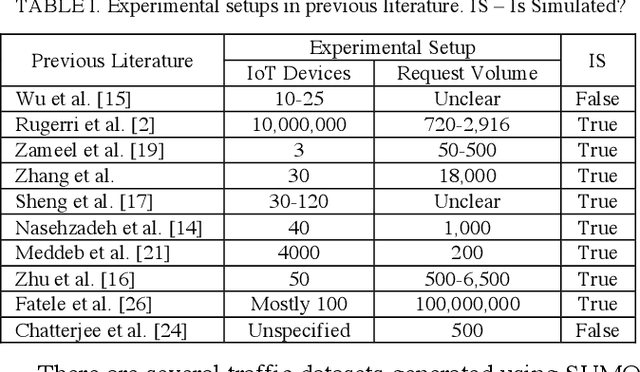
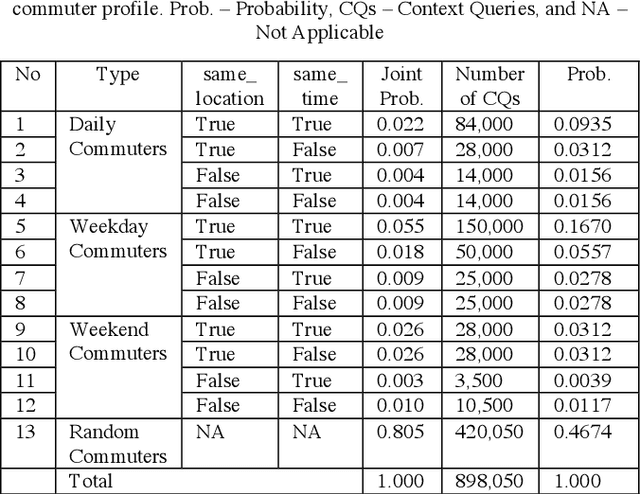


Abstract:The rapid growth in Internet of Things (IoT) has ushered in the way for better context-awareness enabling more smarter applications. Although for the growth in the number of IoT devices, Context Management Platforms (CMPs) that integrate different domains of IoT to produce context information lacks scalability to cater to a high volume of context queries. Research in scalability and adaptation in CMPs are of significant importance due to this reason. However, there is limited methods to benchmarks and validate research in this area due to the lack of sizable sets of context queries that could simulate real-world situations, scenarios, and scenes. Commercially collected context query logs are not publicly accessible and deploying IoT devices, and context consumers in the real-world at scale is expensive and consumes a significant effort and time. Therefore, there is a need to develop a method to reliably generate and simulate context query loads that resembles real-world scenarios to test CMPs for scale. In this paper, we propose a context query simulator for the context-aware smart car parking scenario in Melbourne Central Business District in Australia. We present the process of generating context queries using multiple real-world datasets and publicly accessible reports, followed by the context query execution process. The context query generator matches the popularity of places with the different profiles of commuters, preferences, and traffic variations to produce a dataset of context query templates containing 898,050 records. The simulator is executable over a seven-day profile which far exceeds the simulation time of any IoT system simulator. The context query generation process is also generic and context query language independent.
Poisoning Attacks and Defenses in Federated Learning: A Survey
Jan 14, 2023Abstract:Federated learning (FL) enables the training of models among distributed clients without compromising the privacy of training datasets, while the invisibility of clients datasets and the training process poses a variety of security threats. This survey provides the taxonomy of poisoning attacks and experimental evaluation to discuss the need for robust FL.
Reinforcement Learning Based Approaches to Adaptive Context Caching in Distributed Context Management Systems
Dec 22, 2022Abstract:Performance metrics-driven context caching has a profound impact on throughput and response time in distributed context management systems for real-time context queries. This paper proposes a reinforcement learning based approach to adaptively cache context with the objective of minimizing the cost incurred by context management systems in responding to context queries. Our novel algorithms enable context queries and sub-queries to reuse and repurpose cached context in an efficient manner. This approach is distinctive to traditional data caching approaches by three main features. First, we make selective context cache admissions using no prior knowledge of the context, or the context query load. Secondly, we develop and incorporate innovative heuristic models to calculate expected performance of caching an item when making the decisions. Thirdly, our strategy defines a time-aware continuous cache action space. We present two reinforcement learning agents, a value function estimating actor-critic agent and a policy search agent using deep deterministic policy gradient method. The paper also proposes adaptive policies such as eviction and cache memory scaling to complement our objective. Our method is evaluated using a synthetically generated load of context sub-queries and a synthetic data set inspired from real world data and query samples. We further investigate optimal adaptive caching configurations under different settings. This paper presents, compares, and discusses our findings that the proposed selective caching methods reach short- and long-term cost- and performance-efficiency. The paper demonstrates that the proposed methods outperform other modes of context management such as redirector mode, and database mode, and cache all policy by up to 60% in cost efficiency.
From Traditional Adaptive Data Caching to Adaptive Context Caching: A Survey
Nov 21, 2022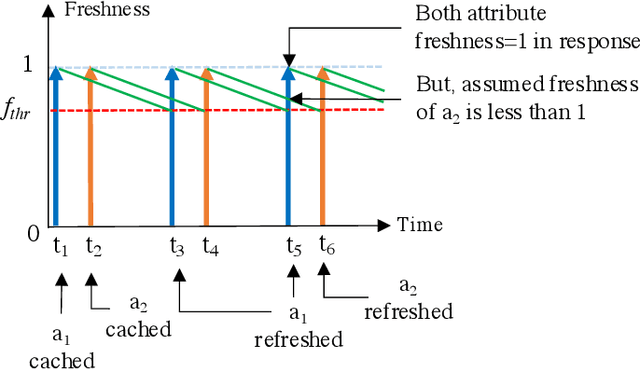
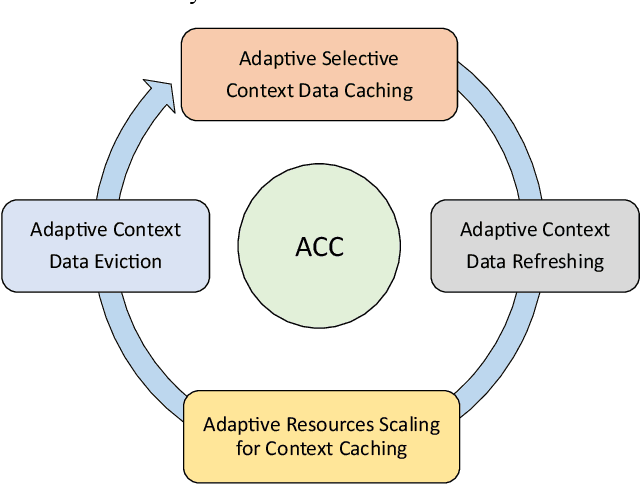
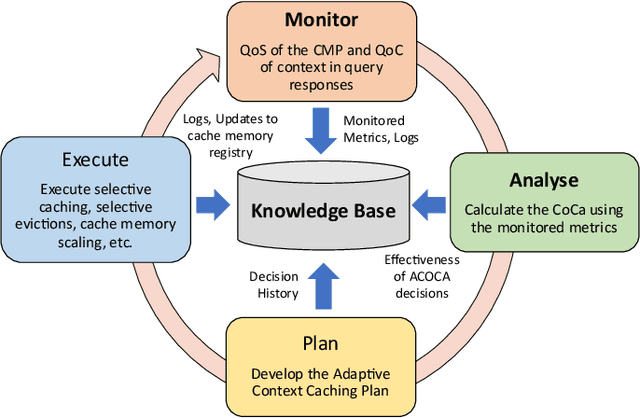
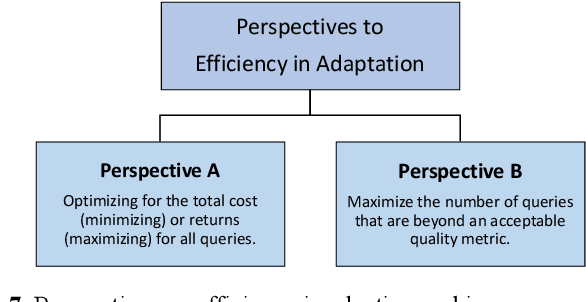
Abstract:Context data is in demand more than ever with the rapid increase in the development of many context-aware Internet of Things applications. Research in context and context-awareness is being conducted to broaden its applicability in light of many practical and technical challenges. One of the challenges is improving performance when responding to large number of context queries. Context Management Platforms that infer and deliver context to applications measure this problem using Quality of Service (QoS) parameters. Although caching is a proven way to improve QoS, transiency of context and features such as variability, heterogeneity of context queries pose an additional real-time cost management problem. This paper presents a critical survey of state-of-the-art in adaptive data caching with the objective of developing a body of knowledge in cost- and performance-efficient adaptive caching strategies. We comprehensively survey a large number of research publications and evaluate, compare, and contrast different techniques, policies, approaches, and schemes in adaptive caching. Our critical analysis is motivated by the focus on adaptively caching context as a core research problem. A formal definition for adaptive context caching is then proposed, followed by identified features and requirements of a well-designed, objective optimal adaptive context caching strategy.
A Unified Approach to Semantic Information and Communication based on Probabilistic Logic
May 02, 2022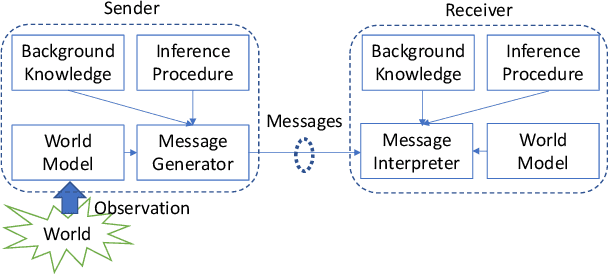
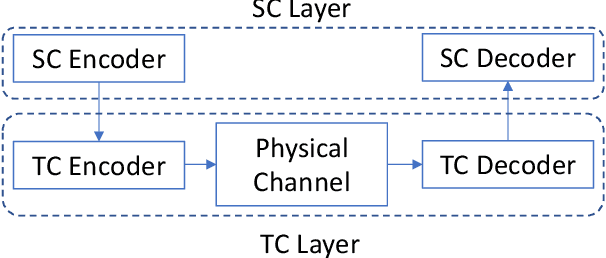
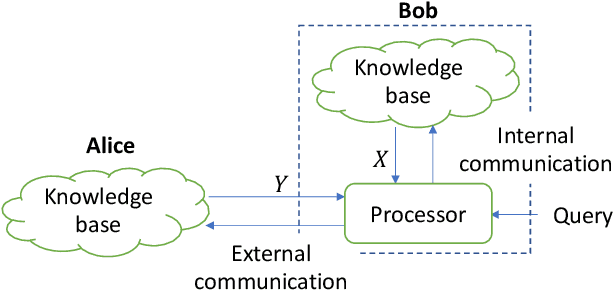
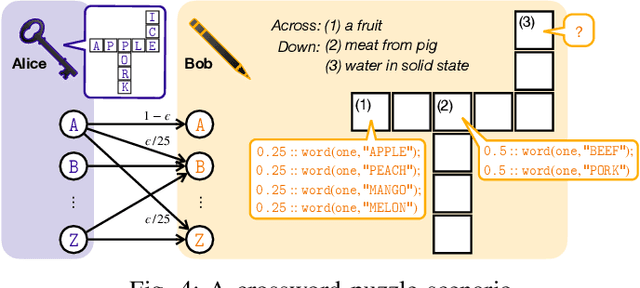
Abstract:Traditionally, studies on technical communication (TC) are based on stochastic modeling and manipulation. This is not sufficient for semantic communication (SC) where semantic elements are logically connected, rather than stochastically correlated. To fill this void, by leveraging a logical programming language called probabilistic logic (ProbLog), we propose a unified approach to semantic information and communication through the interplay between TC and SC. On top of the well-established existing TC layer, we introduce a SC layer that utilizes knowledge bases of communicating parties for the exchange of semantic information. These knowledge bases are logically described, manipulated, and exploited using ProbLog. To make these SC and TC layers interact, we propose various measures based on the entropy of a clause in a knowledge base. These measures allow us to delineate various technical issues on SC such as a message selection problem for improving the knowledge base at a receiver. Extending this, we showcase selected examples in which SC and TC layers interact with each other while taking into account constraints on physical channels and efficiently utilizing channel resources.
A Unified View on Semantic Information and Communication: A Probabilistic Logic Approach
Jan 16, 2022


Abstract:This article aims to provide a unified and technical approach to semantic information, communication, and their interplay through the lens of probabilistic logic. To this end, on top of the existing technical communication (TC) layer, we additionally introduce a semantic communication (SC) layer that exchanges logically meaningful clauses in knowledge bases. To make these SC and TC layers interact, we propose various measures based on the entropy of a clause in a knowledge base. These measures allow us to delineate various technical issues on SC such as a message selection problem for improving the knowledge at a receiver. Extending this, we showcase selected examples in which SC and TC layers interact with each other while taking into account constraints on physical channels.
 Add to Chrome
Add to Chrome Add to Firefox
Add to Firefox Add to Edge
Add to Edge